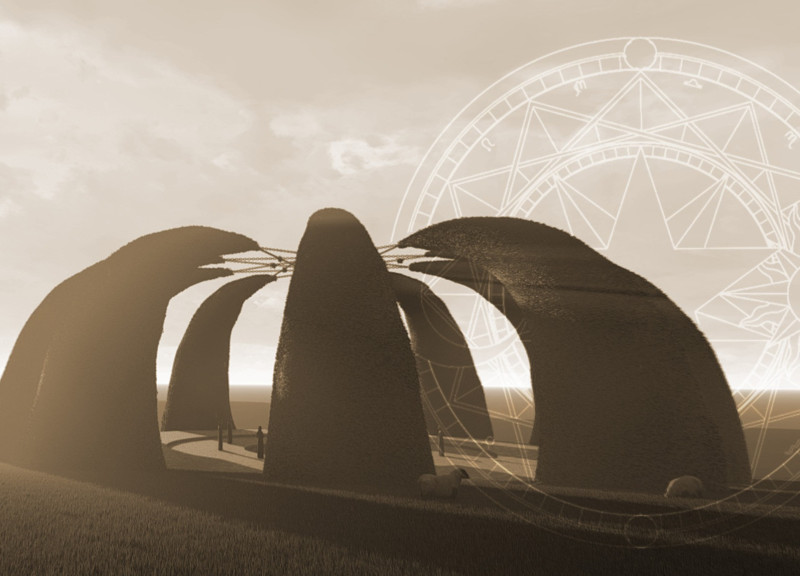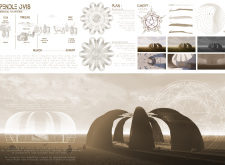5 key facts about this project
The Pendle JVIS Memorial for Witches is located in Pendle Hill, Lancashire, UK. It addresses the historical events of the 1612 witch hunts, a difficult chapter marked by social misunderstanding and wrongful accusations. The design focuses on themes of victimhood and societal stereotypes, inviting visitors to reflect on and remember the individuals affected by these events.
Architectural Expression
The design features a pentacle floor plan that serves as a central theme for the memorial. This geometrical symbol, often connected to witchcraft, links closely with the memorial's historical significance. Each point of the pentacle represents the lives affected by the witch hunts, creating a space that encourages contemplation about their intertwined fates.
Material and Texture
The architectural composition includes a basement landscape that merges natural elements with the memorial's form. The structure descends from sheep's horn surfaces, reinforcing its connection to the local environment. The use of wood bark adds texture, creating a tangible relationship with the area while reflecting regional identity.
Ambiance and Spatial Layout
An underground component echoes the architectural style found in historical prison structures of Lancashire. By doing so, the design enriches the memorial’s context, allowing visitors to engage more deeply with its themes. The ambient atmosphere in this part of the space features controlled lighting and humidity, fostering a serious mood that reflects the gravity of the historical events.
Natural Integration
The design also incorporates mosses, emphasizing the interaction between architecture and nature. This living element allows the moss to grow on various surfaces, symbolizing nature's ability to reclaim spaces marked by human tragedy. This aspect creates a relationship with the environment, representing a dialogue between past and present.
The details within the Pendle JVIS Memorial for Witches contribute to an immersive environment that communicates the weight of historical memory. Each element works together to create a space that resonates with both the local landscape and the stories of those who were unjustly accused.



















































